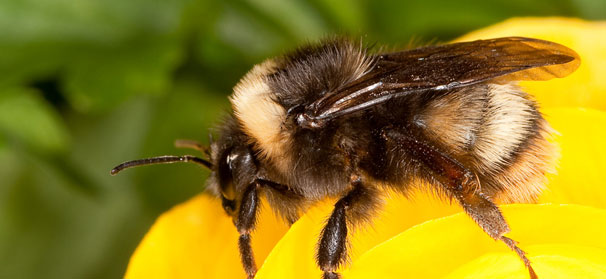

Apr 23, 2012Turn marginal land into haven for beneficial insects
All growers probably have some land that doesn’t quite meet their crop needs.
Such marginal land can serve another great purpose, however, said Julianna Tuell, an entomologist with Michigan State University (MSU). Tuell told growers during a March meeting in Hart, Mich., that such land can be used for beneficial insects.
Falling into two basic categories, Tuell said, beneficial insects are either natural enemies of pests or act as pollinators.
Natural enemies can be predatory insects that eat other insects or collect them to feed their young, Tuell said. Some eat pest insects in both the larval and adult stages, such as lady beetles or assassin bugs. Others only eat larval bugs and, as adults, need nectar for food. These include lacewings, hover flies and paper wasps.
Other natural enemies can be parasitic, Tuell said, living in or on the host insect as larvae. As adults, they often are free-living wasps or flies, many of which feed on nectar. Parasitoids tend to kill the host insect slowly and are usually highly specialized, preying on one particular host species. This can be effective when managing for a specific pest, Tuell said.
Pollinators aren’t just limited to insects, Tuell said. Birds and even bats can be effective pollinators. Bees are the dominant pollinator, however, with more than 20,000 species worldwide.
Honeybees are the most abundant and important crop pollinator, Tuell said. Queen honeybees live for several years, and a new queen is generated when the colony becomes too large for the nest or the current queen dies. Bumblebees are growing in popularity as pollinators. They are social bees, found wherever ample flowers and nesting sites are available, and thrive in managed marginal land, she said.
Tuell advised using marginal acreage to grow plants that flower at different times of the year and will provide enough nutrition for beneficial insects. Woody flowering trees and shrubs, as well as a mixture of native grasses, work well to build the right habitat.
Site preparation is vital to making these plantings succeed, Tuell said. Use of herbicides or burning works well prior to planting. She suggests hiring or renting a native plant seed drill designed for the shallow seeding of grasses and forbs. Quite often, the seed used for borders and marginal land planting is very small in size, so it helps to have the proper equipment.
Patience is another vital step. It often takes up to two years for the plants to establish themselves and produce enough flowers to be truly helpful, she said.
As for croplands, Tuell suggests growers limit tilling until after a crop is finished to minimize interference, especially with a ground-nesting beneficial such as a mining bee species. For the same reason, limiting pesticide exposure by preventing drift and using pesticides targeted for a specific pest are also recommended, she said. Another practice is to provide nesting materials around field margins for some species.
By Derrek Sigler, Assistant Editor














